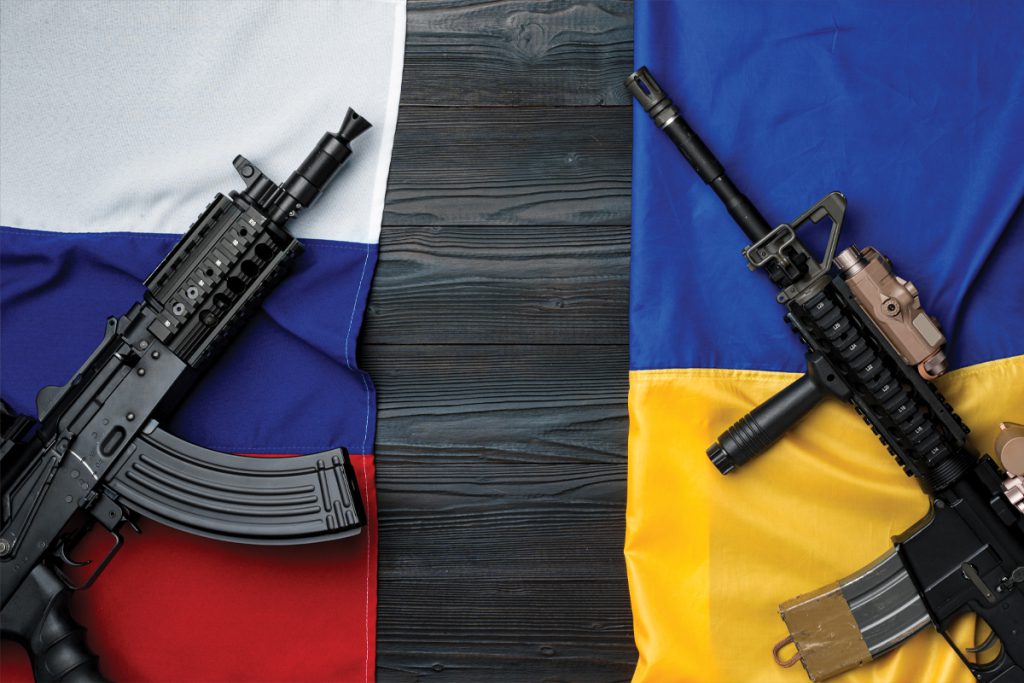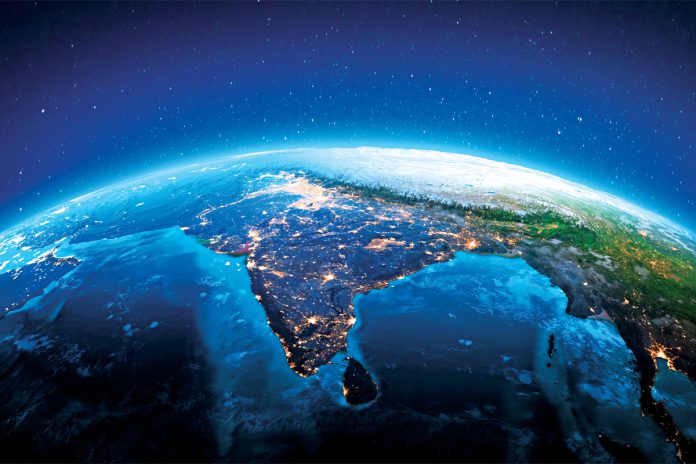Words by Neeraj Tiwari
In a world increasingly defined by military confrontations and economic disruptions, three major geopolitical flashpoints—Russia-Ukraine, Israel-Hamas, and India-Pakistan—are shaping not only the global security agenda but also trade flows and diplomatic alignments. These conflicts are more than localized tensions; they are reshaping the global order with implications for economic stability, energy markets, and the future of international alliances.
Russia-Ukraine: Economic Aftershocks of a Military Quagmire

The Russia-Ukraine war, now entering its third year, remains the most significant military conflict in Europe since World War II. What began as a territorial invasion has evolved into a geopolitical standoff with far-reaching economic impacts. According to the International Monetary Fund (IMF), global economic growth slowed to 2.9% in 2024, largely due to continued disruptions in energy and food supplies triggered by the war.
Russia and Ukraine together account for nearly 30% of global wheat exports. The conflict has led to severe price fluctuations. The World Bank reported that wheat prices surged by over 25% between 2022 and 2024. The Black Sea grain corridor, a crucial maritime route, has been intermittently blocked or targeted, worsening global food insecurity.
In response to Western sanctions, Russia has deepened its cooperation with BRICS. Speaking at the 2025 BRICS summit in Kazan, Russian President Vladimir Putin stated: “The era of Western dominance is over; we are forging new paths with our partners.”

NATO, on the other hand, has ramped up support for Ukraine, supplying advanced defence systems and relaxing range restrictions on Western-supplied weapons. The U.S. alone has provided over $75 billion in aid, according to the Congressional Research Service.
Israel-Hamas: Regional Warfare with Global Supply Chain Fallout
The Israel-Hamas conflict escalated into full-blown regional warfare late in 2024, destabilizing the Middle East and reverberating through global trade networks. A particular concern is the increased military presence in the Red Sea—a strategic waterway through which nearly 12% of global trade passes.
Shipping giants such as Maersk and MSC have rerouted vessels, increasing freight times and costs. According to BusinessWorld, container shipping prices from Asia to Europe rose by 18% in Q1 2025 due to Red Sea rerouting.
Geopolitically, the conflict has sharpened divides in the region. With Iran backing Hamas and the U.S. standing by Israel, the conflict has become a proxy battleground, complicating peace processes and regional diplomacy.
India-Pakistan: Old Rivalry, New Disruptions

The enduring tensions between India and Pakistan recently reignited after a deadly attack in Indian-administered Kashmir, followed by retaliatory airstrikes. This prompted India to shut the Attari-Wagah border, a vital trade route that saw over $450 million in annual bilateral trade, as per Firstpost.
Despite regional instability, India’s economy has remained resilient. Moody’s Analytics forecasts India’s GDP growth to remain above 6.5% in 2025, citing strong domestic consumption and robust infrastructure investment.
India’s External Affairs Minister Dr. S. Jaishankar emphasized India’s strategic balance in diplomacy: “Friendships are not exclusive, particularly in a multipolar world.”
However, SAARC remains ineffective in facilitating regional integration. Intra-SAARC trade is below 5% of the region’s total trade, according to South Asia Voices, compared to 25% in ASEAN. Analysts suggest that bilateral political rivalries, particularly between India and Pakistan, continue to hamper meaningful cooperation.
International Alliances: Realignment and Resilience
Amid these crises, global alliances are evolving rapidly:
- BRICS is expanding its role as an economic bloc to challenge Western hegemony. China and India have called for increased financial autonomy through mechanisms like the New Development Bank.
- NATO has reaffirmed its relevance with unified responses to Russian aggression, despite internal debates over defence spending.
- SAARC, although conceptually vital, remains paralyzed by bilateral disputes, particularly the India-Pakistan deadlock.
Japan’s Prime Minister Fumio Kishida emphasized at the UN in 2024: “Russia’s aggression against Ukraine challenges the rules-based international order. We must respond collectively to preserve peace.”
China, meanwhile, has remained cautious, calling for dialogue while quietly expanding its global influence through the Belt and Road Initiative and positioning itself as a neutral powerbroker.
The World at a Crossroads
From the wheat fields of Ukraine to the Red Sea shipping lanes and the volatile Line of Control in Kashmir, the world’s flashpoints are interconnected by threads of trade, ideology, and power. With economic warfare becoming as impactful as military confrontation, the choices nations make today will determine not just the future of regional conflicts, but the architecture of global governance.
“In a world of deepening divisions, dialogue remains our most powerful tool for peace.” – António Guterres, UN Secretary-General


